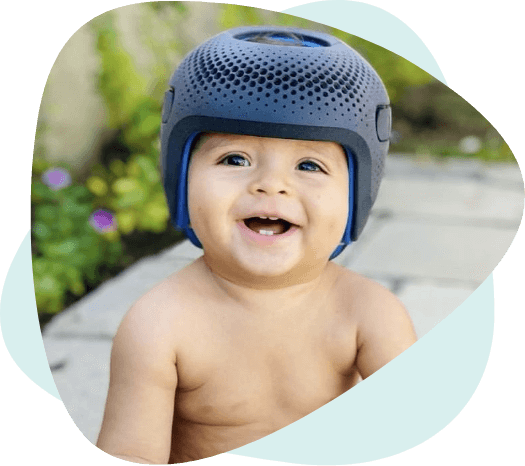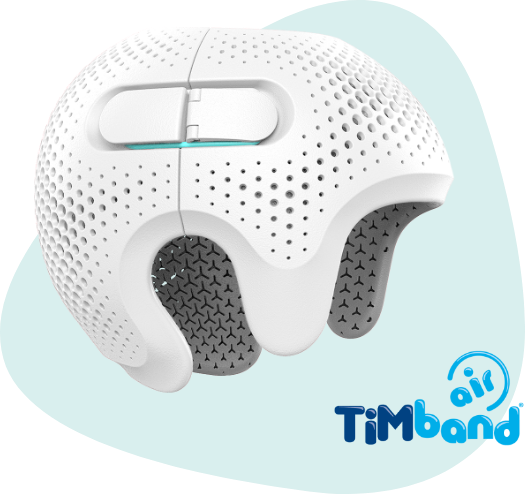Torticollis
- Home >
- Head Abnormalities >
- Torticollis
What is Torticollis?
Torticollis, also known as wry neck, is a condition in which a baby's neck muscles are tight or shortened on one side, causing the head to tilt or turn to one side. Torticollis can lead to flat head syndromes, such as plagiocephaly, or brachycephaly if the baby continually favours one side of their head.

What are typical symptoms?
Symptoms of torticollis include a head tilt or turn, difficulty turning the head in one direction, and a flat spot on one side of the head due to pressure from the head resting in the same position.
Why does it happen to babies?
Torticollis can be caused by a variety of factors, including being in a breech position during pregnancy, traumatic birth, muscle imbalances, or a congenital condition. It is often associated with flat head syndrome, as the baby may favour one side of the head due to discomfort or muscle tightness.
What challenges does it create for the child and their parents?
Untreated torticollis can lead to uneven development of the neck muscles, poor posture, delayed motor skills, and developmental delays. It can also make it difficult for the baby to breastfeed or bottle-feed on one side, leading to feeding difficulties.
For parents, it can be challenging to see their baby uncomfortable or struggling with feeding.
If left untreated, torticollis can lead to long-term complications such as scoliosis and chronic neck pain.
Recommended treatments
Treatment for torticollis can include physical therapy, stretching exercises, and positioning techniques such as repositioning and tummy time. In severe cases or cases where flat head syndrome has developed, a cranial remoulding helmet may be recommended to correct the shape of the head.

Benefits of helmets
Cranial remoulding helmets are designed to gently reshape the baby's skull over time, guiding them as they grow. For babies with torticollis with a co-occurring flat head syndrome, helmets, used in conjunction with repositioning and physical therapy, can be the most effective treatment, especially for severe cases.
The TiMbandAir is designed to be comfortably worn for 23 hours a day, applying gentle pressure to guide your baby’s growth and correct any flat spots or abnormalities.
What to do if you think your baby has torticollis
It is important for parents to seek early diagnosis and treatment for torticollis, as early intervention can lead to better outcomes and prevent long-term complications. If you suspect that your baby may have torticollis or flat head syndrome, speak to a health professional as soon as possible.
Need more advice? Visit our support page for more information.
Our experts are happy to answer all your questions and provide the best solutions.